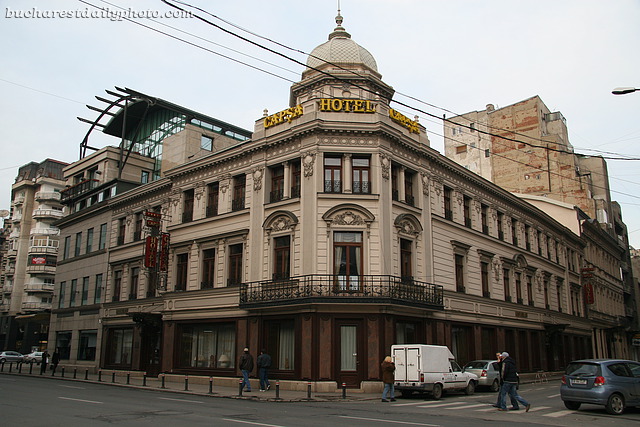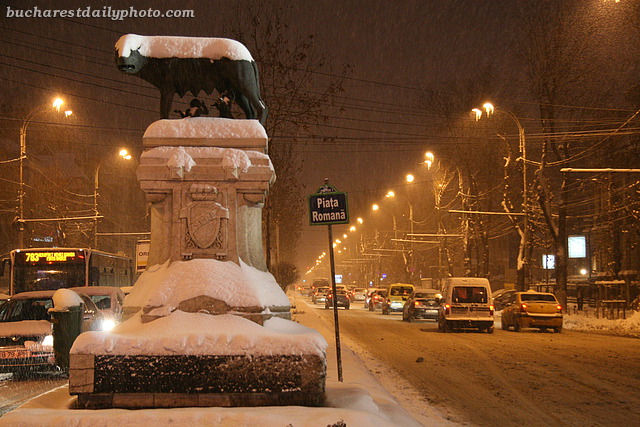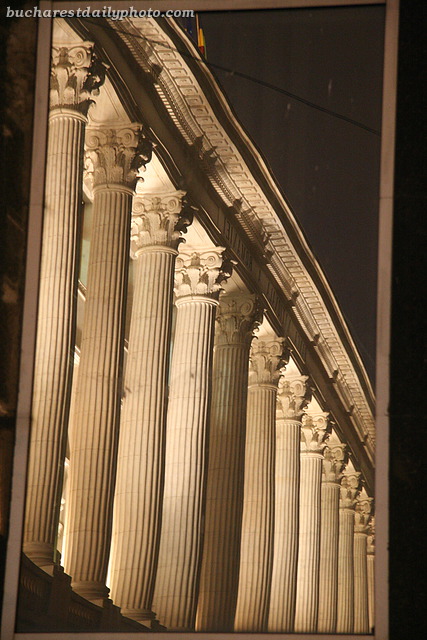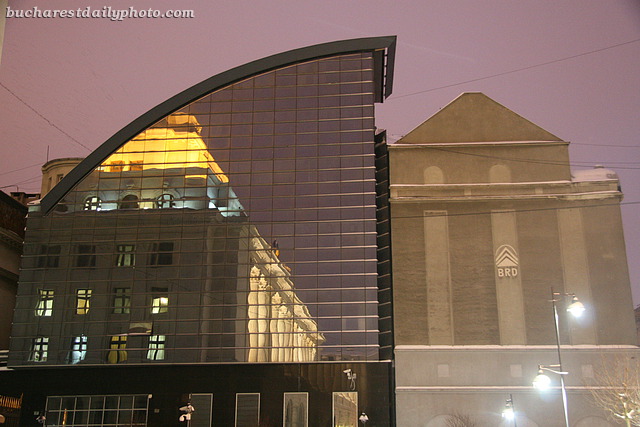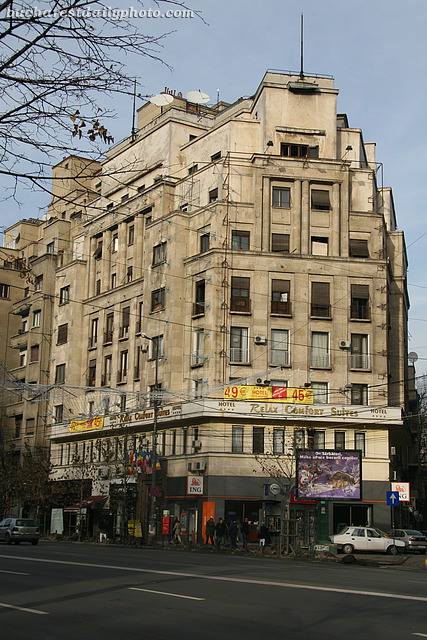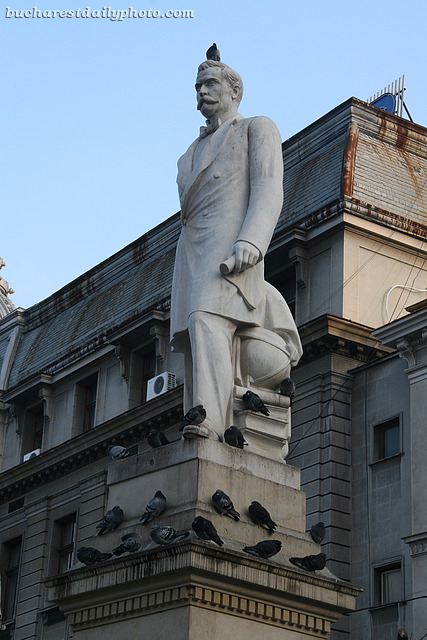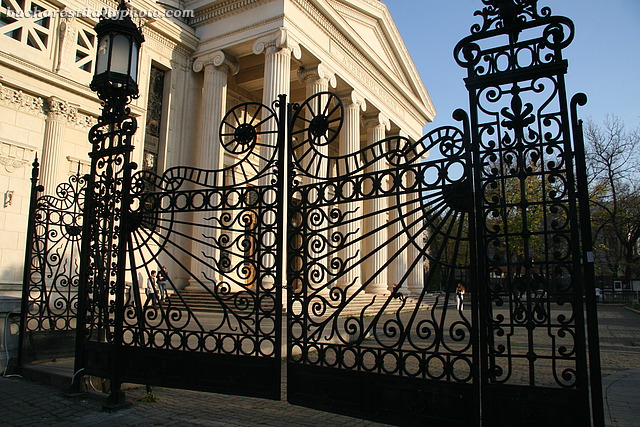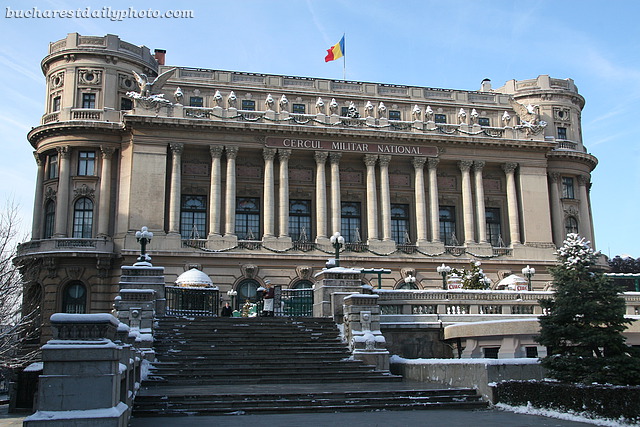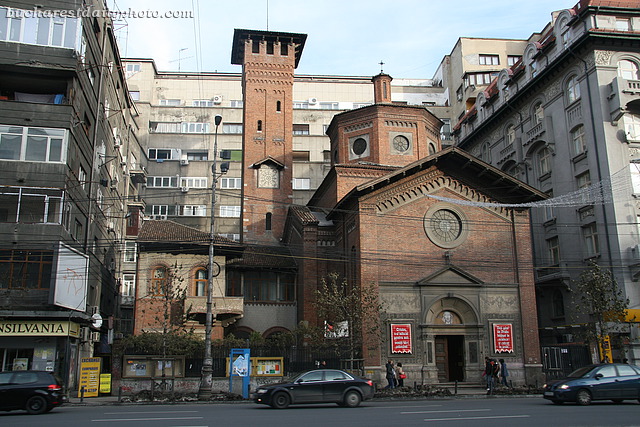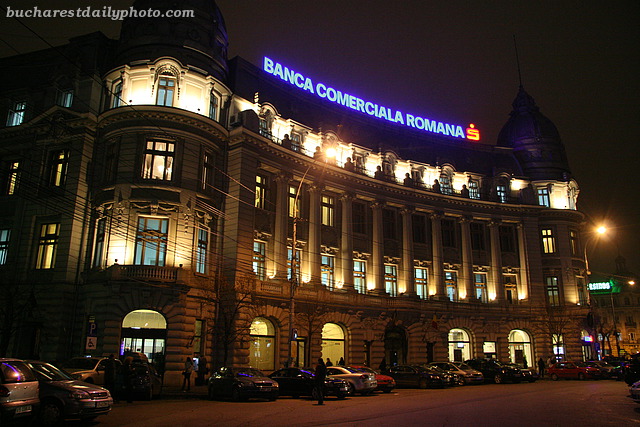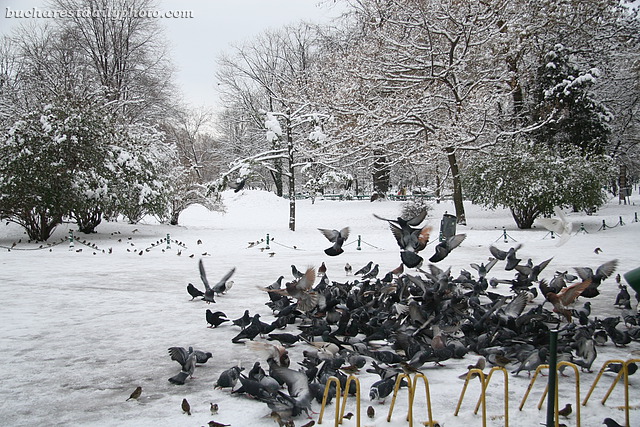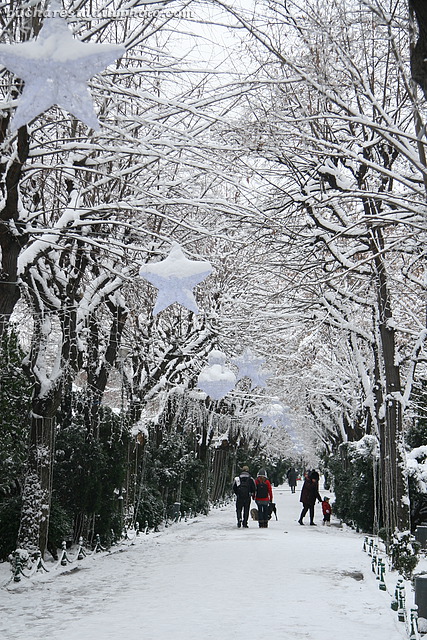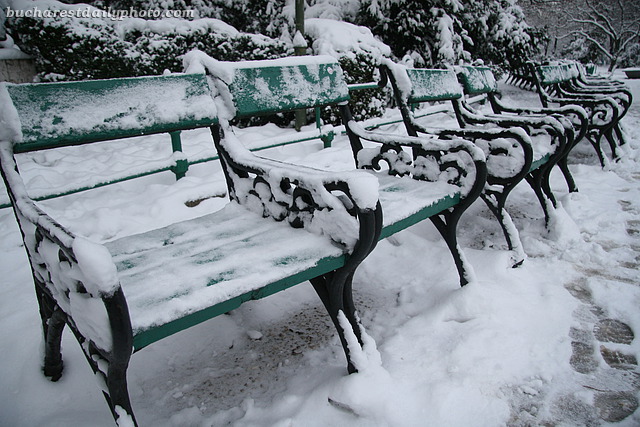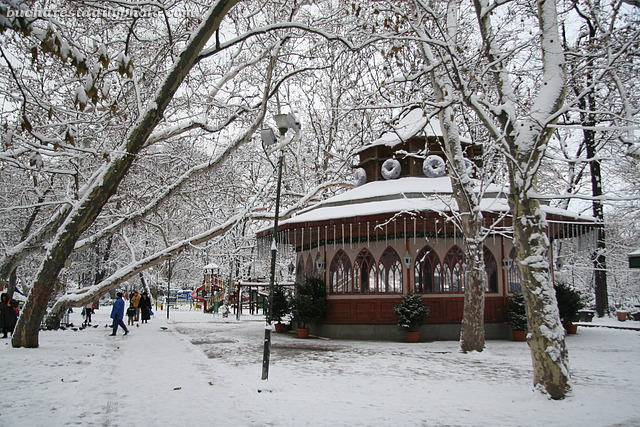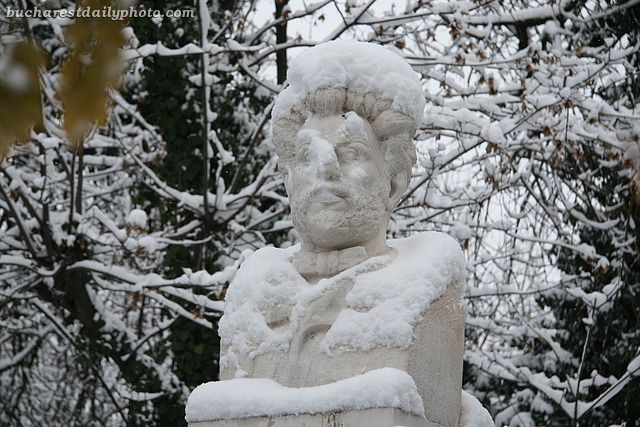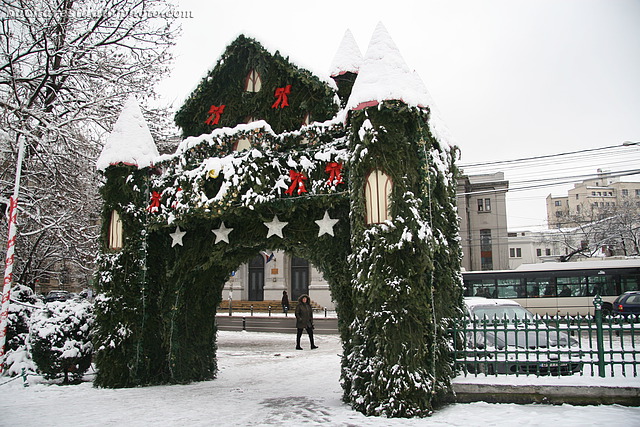Capşa House (Casa Capşa in Romanian), “Restaurant, Hotel, Café and Confectionery”, was for long period of time the symbol of the Romanian elite society, a meeting place for politicians, journalists, artists, writers, etc. It all started in 1852 when two brothers, Anton and Vasile Capşa, opened a confectionery shop on Calea Victoriei, a short distance from the present location of Capşa House, which was opened as a confectionery shop by their younger brother Grigore Capşa (1841-1902) in 1868. Grigore Capşa had just returned from Paris, where he apprenticed for four years at the renowned Maison Boissier. Soon, he established a solid reputation as a known brand all over the continent, becoming the supplier for the Royal Court of Romania in 1869 (until then the Royal House was bringing the confections from Paris). Serbian and Bulgarian courts followed in 1882 and 1908, respectively. In 1886 the hotel and the restaurant opened. The hotel was quickly recognized as the most elegant Romanian hotel, winning, together with the confectionery shop, lots of awards and distinctions. Finally, in 1891, the owners opened Capşa cafe, which became the center of the fashionable life in Bucharest. With so many members of the high society and politicians frequenting this place, it was said that governments were made and broke at Capşa. After 1930s the writers made the cafe their meeting place. The writer Tudor Arghezi made even a short portrait of the “writer who goes to Capşa”. He wrote “The Capşa man is an inteligent and dangerous individual and the real critique is done at Capşa, not in the literary press. If you’re stupid at Capşa is impossible to be smart anywhere else, even in writing”. The decline of the Capşa House came with the arrival of the communist regime, when it was run by the state under the name “Bucharest. Brasserie and restaurant”. After the fall of communism, Casa Capşa was restored quite beautifully in 2002-2003 and reopened as an elegant 5 star hotel. Unfortunately they didn’t succeed in giving back its spirit and glamour which can only be relived now in the history books.
Last October I’ve told you the story of the well-traveled she wolf. Here is a new shot of the she wolf enjoying the snowfall.
Since yesterday I’ve showed you the National Bank building, it’s going to be easy to guess what is showing in today’s reflections.
A little further down the block lies another corner structure, equally interesting. This one is temporarily without a banner, but if you look closely you can spot the metal frame used for hanging the banners on the facade. Called SUN Apartment building, it was built in 1934 by architect Herman Clejan.
Out of the four statues in the University Square, the one in today’s photograph is the one that seems to agree by far with the square’s pigeons. In fact, the last few times I passed through the square there were no pigeons on any of the other three statues. The statue is that of Spiru Haret (February 15, 1851 – December 17 1912), mathematician, astronomer, professor and politician, who served as the Minister of Education three terms and brought reforms that helped build the Romanian education system. The statue is by Ion Jalea and was placed in the square in 1935.
These are the iron wrough gates of the Athenaeum park. I just thought they look nice.
It’s time for another example of ornate French architecture. Here’s proof that Bucharest has it own wedding cake! 🙂 The building in today’s photo is the National Military Club (Cercul Militar Naţional in Romanian), designed in French neo-Classical style by Dimitrie Maimarolu, Victor Ştefanescu and Ernest Doneaud. It was designed to be a social, cultural and educational centre for the Romanian Army. Its construction started in 1911 and ended in 1923. Most of the funds were donated by the Romanian Army officers. The building has numerous reception halls and meeting rooms, a theatre, a bookshop, art galleries. The Military Circle was built on the spot left free by the demolishing of Sărindar monastery church, built in 1652. The monastery was damaged in the 1838 earthquake, after which it deteriorated slowly, and was in the end abandoned and demolished in 1907.
Even if my title didn’t spell it out, I don’t think it would have taken you more than a few seconds to identify this building. The campanile and the Lombard Romanesque style speak for themselves. The Italian Church of the Most Holy Redeemer is a Roman Catholic Church built in 1915-1916 using funds donated by the Vittorio Emanuele III, the Holy See, the Italian Embassy in Bucharest and the Italian community in Romania which in 1915 counted about 7000 people. It is the property of the Italian government and is located on the busiest boulevard in Bucharest, Nicolae Bălcescu. The architects were Mario Stoppa and Giuseppe Furaboschi. The first appointed priest, Antonio Mantica, served here until December 1949 when he was arrested by the communists and forced to live Romania. The newly appointed priest, Clemente Gatti, served until March 1951 when he also was arrested, sentenced to 15 years in prison and later deported. The church was closed until 1968 when it was opened with the occasion of a state visit by the Italian Prime Minister Amintore Fanfani. Following the visit, the church remained open, but only a few services a year were performed, on special occasions like Easter, Christmas, the Assumption of Mary etc. Finally, the Italian Church was reopened in 1989 after the Romanian Revolution. Services are held daily in Romanian, and on Sundays in Romanian, Italian and Polish. The parish house was added in 1924 and for a while served as the Italian school. The campanile is 27.75 meters tall and carries 4 large bells. The surrounding tall buildings were raised in the 1930’s altering the space around the church.
I like shooting night time pictures of Bucharest. I guess that’s because, like many big cities, Bucharest feels like a different place at night, a calmer, not as chaotic and demanding place as during the day. This is why you’ve already seen many night shots on my blog and there are more to come.
Remember the dome featured in the “white blankets” photo from two days ago? It belongs to the building in today’s photo, the classical and elegant headquarters of the Romanian Commercial Bank, built in 1906 by architect Oscar Maugsch for the Generala Insurance Company.
And finally I present to you the last photos in the snow series, all taken two days ago in my favourite park, Cişmigiu. Looks like the subzero cold wasn’t enough to keep people from coming to the park. Lots of folks were out and about strolling the alleys; it’s true that nobody was sitting on the benches for a chat 🙂 I’ve met quite a few fellows with their cameras and even compared photo equipment with a couple (they had a Nikon while I’m part of the Canon team). As you can see in the above photo, someone was feeding the pigeons just as I entered the park. Here comes the rest:
Taking a stroll
Statue of Ion Creangă, Romanian writer
